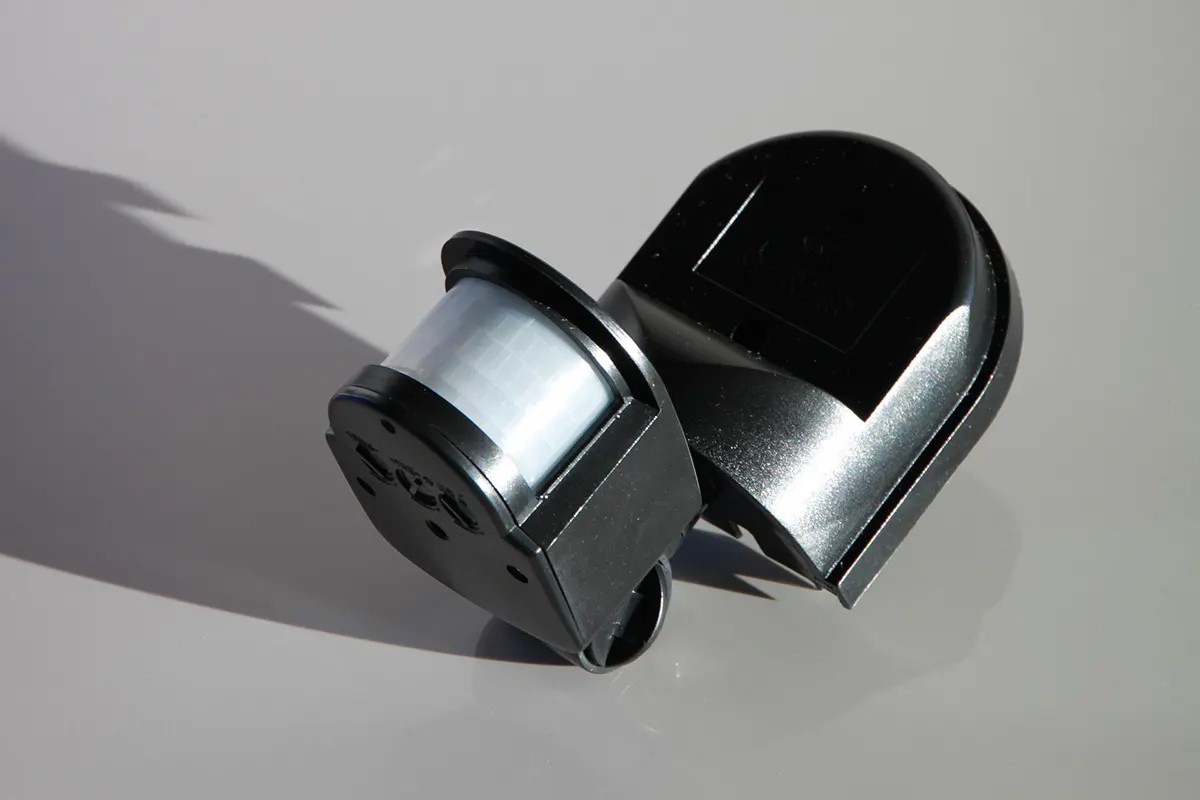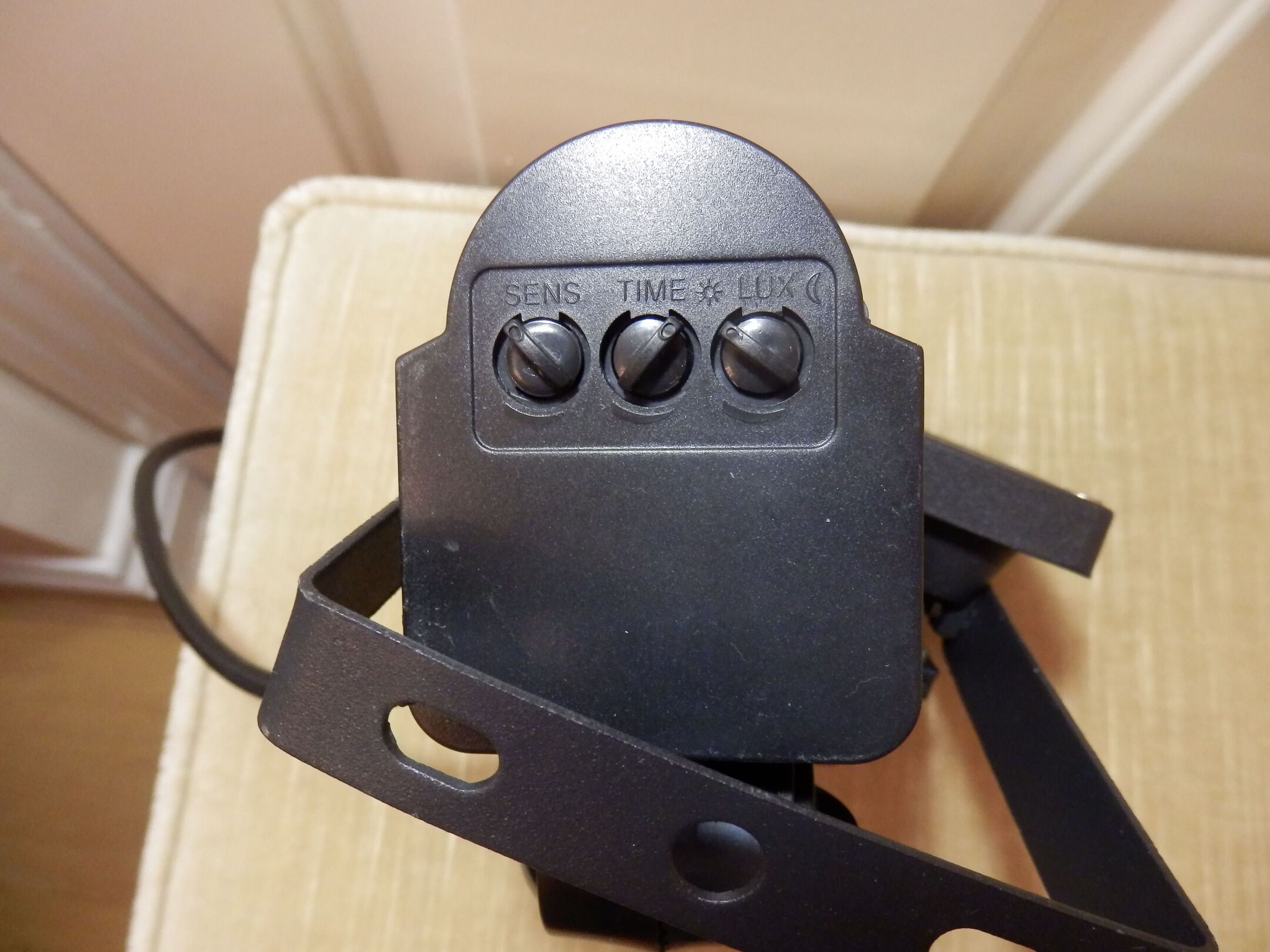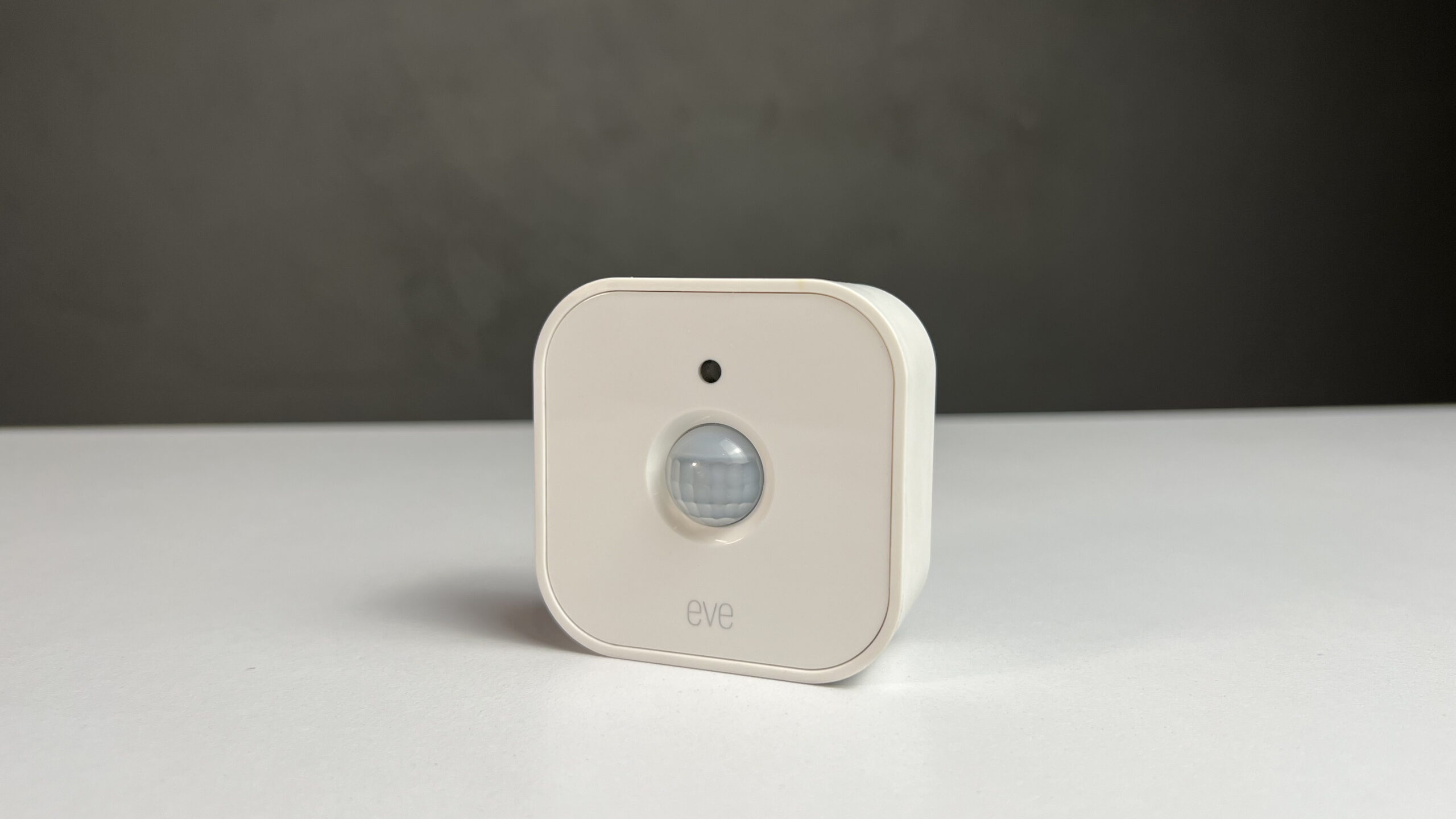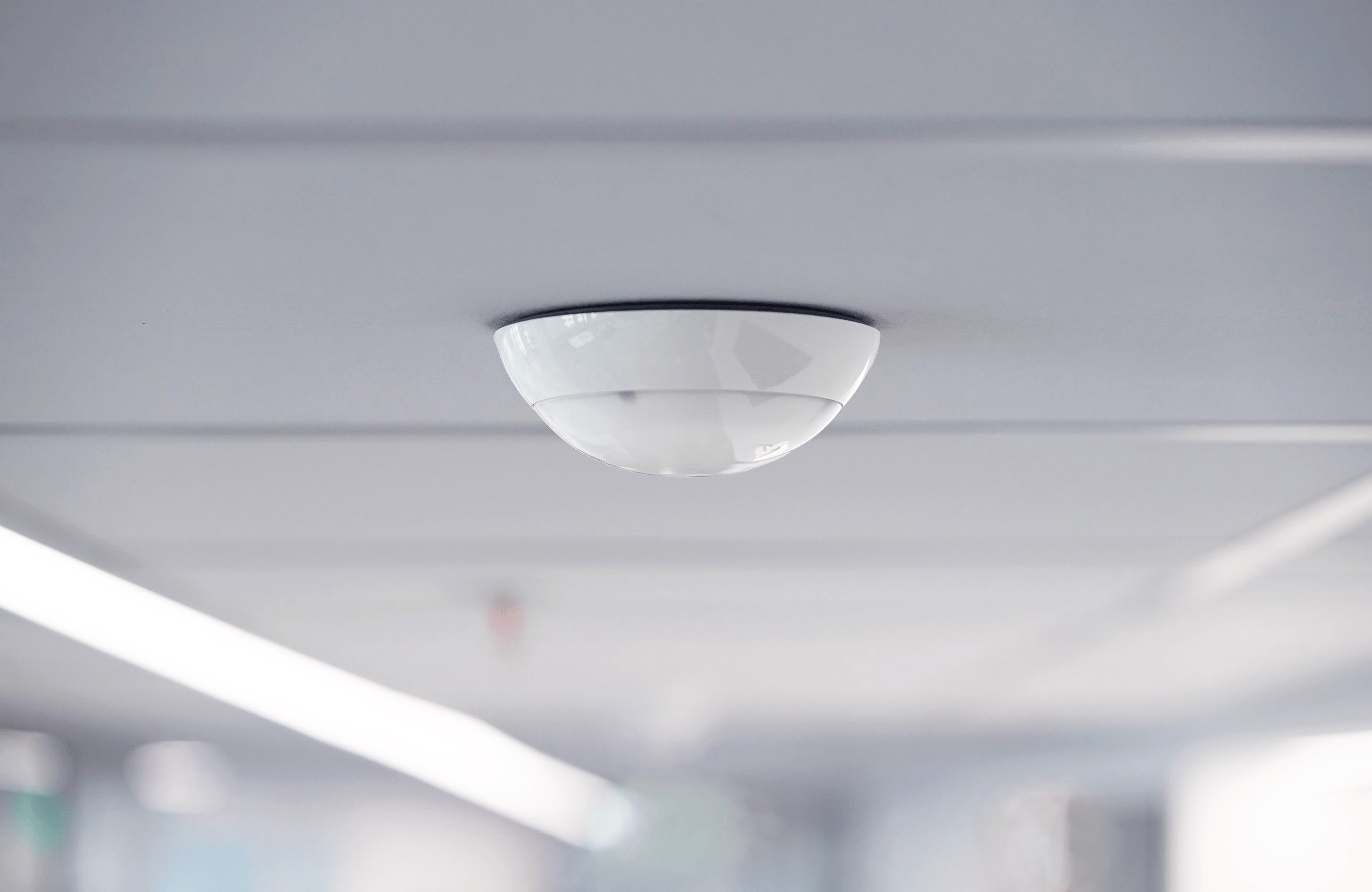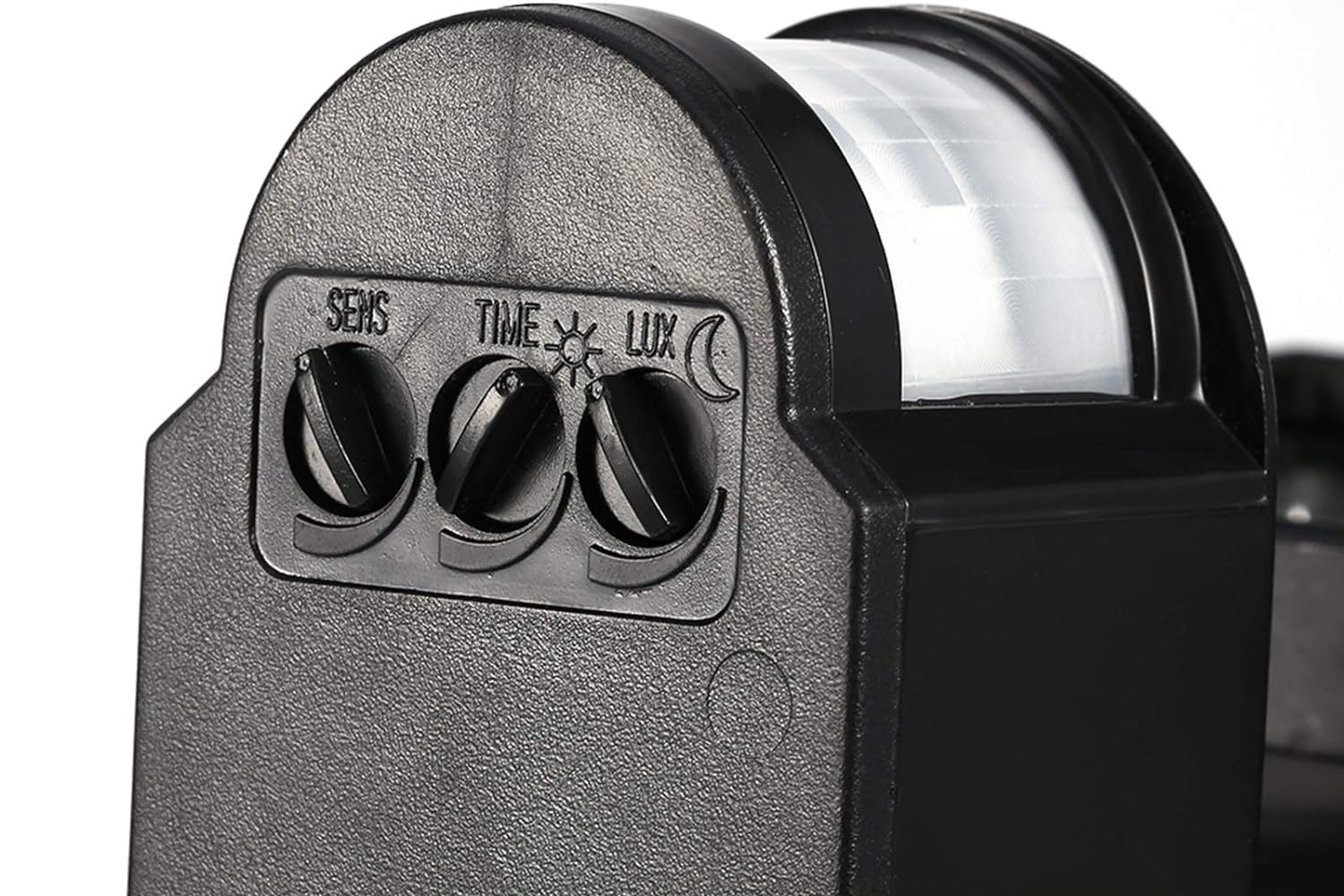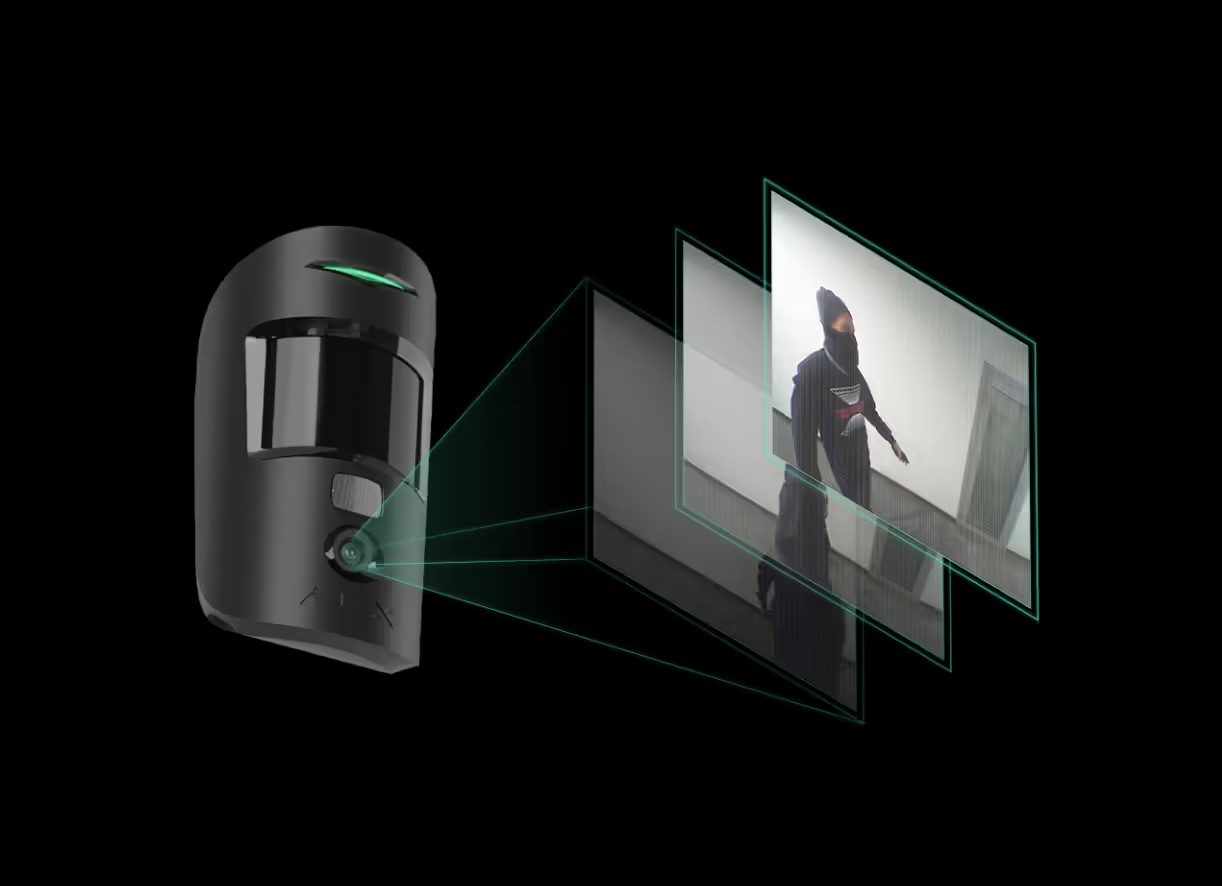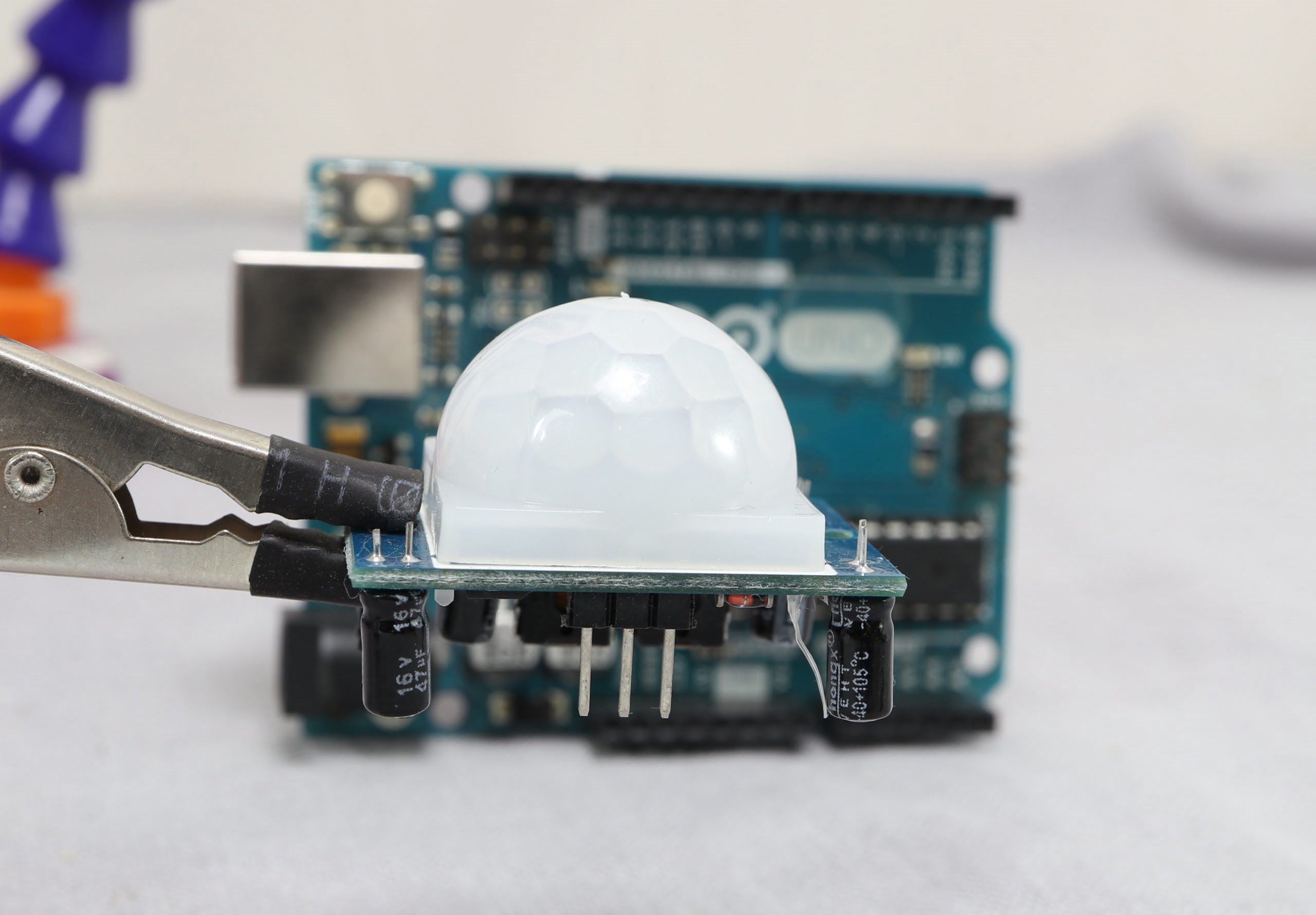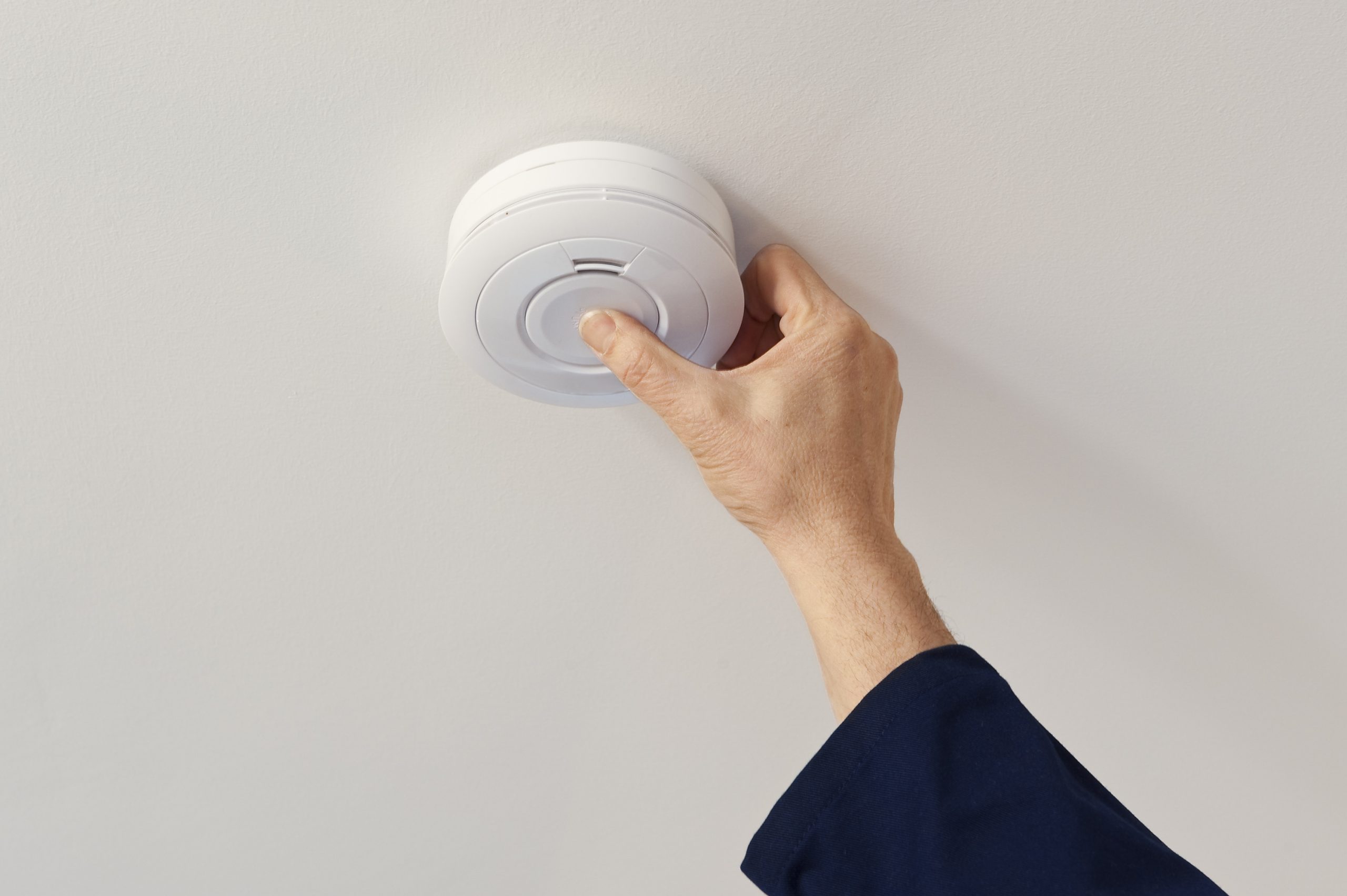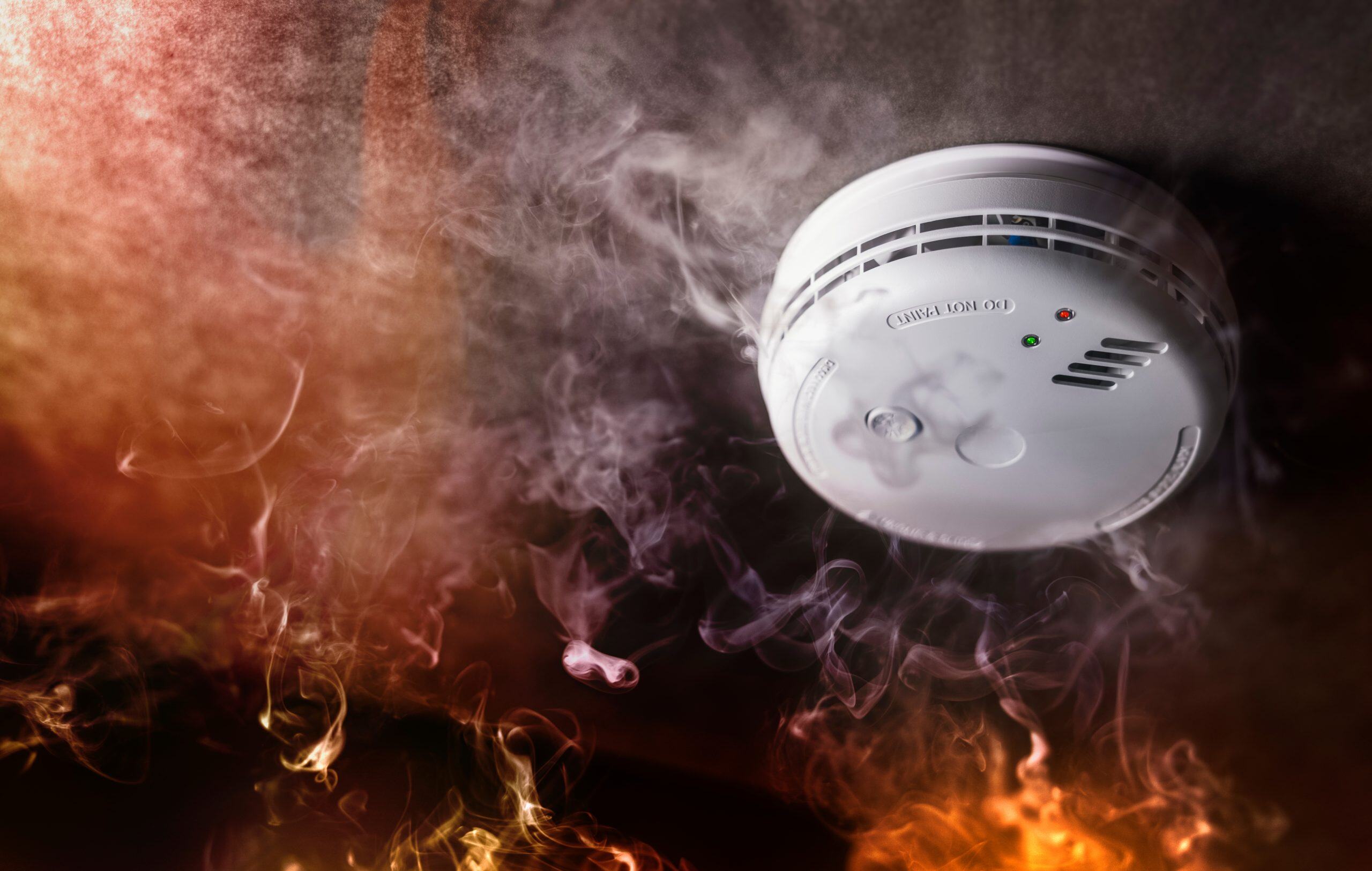Home>Home Security and Surveillance>What Does An Infrared Motion Detector Do?
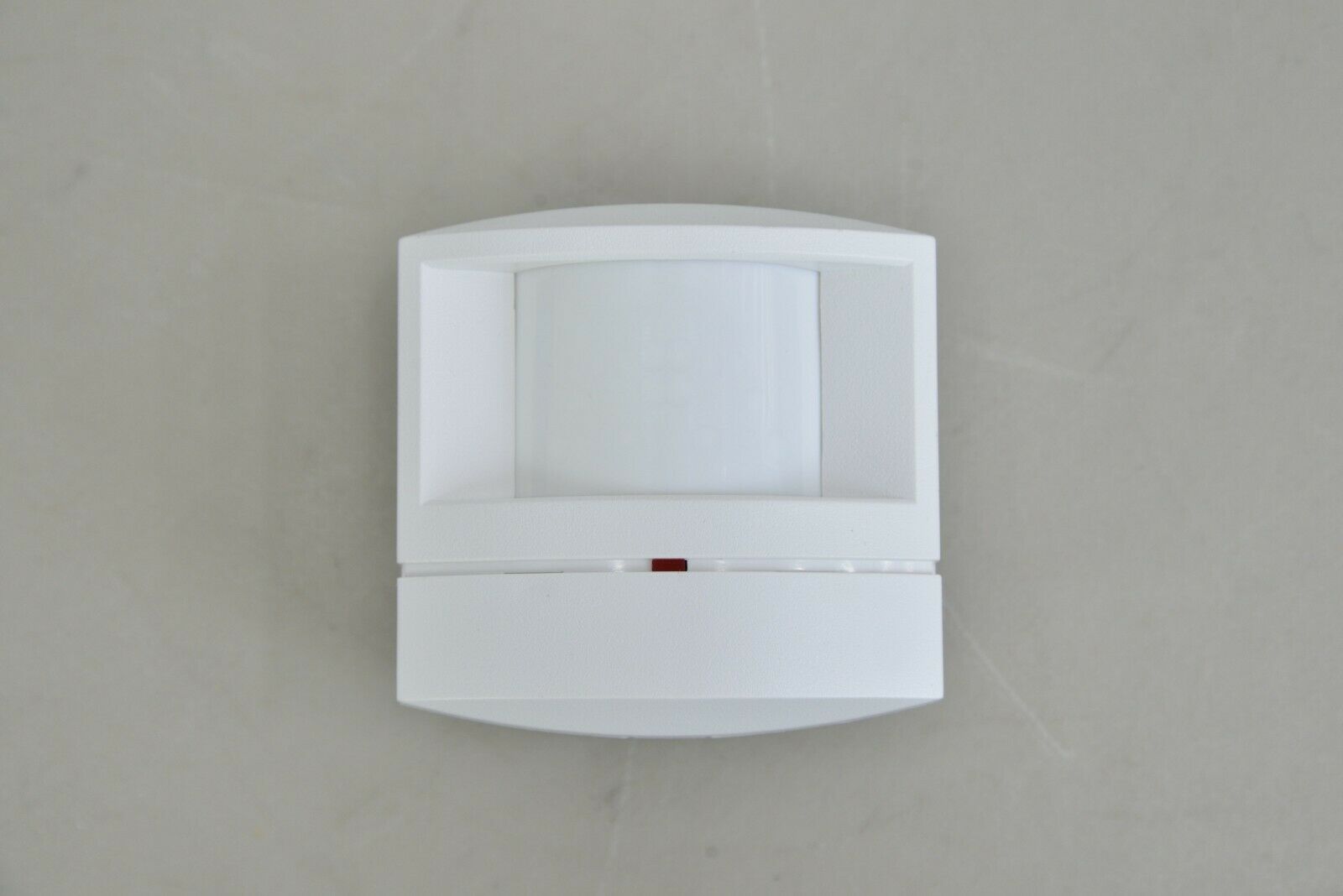

Home Security and Surveillance
What Does An Infrared Motion Detector Do?
Modified: November 1, 2024
Learn how an infrared motion detector enhances your home security and surveillance. Find out how it detects movement and alerts you of potential threats.
(Many of the links in this article redirect to a specific reviewed product. Your purchase of these products through affiliate links helps to generate commission for Storables.com, at no extra cost. Learn more)
Introduction
Welcome to the world of home security and surveillance! In today’s rapidly advancing technological age, ensuring the safety and protection of our homes has become a top priority. One of the most effective ways to do so is by incorporating infrared motion detectors into our security systems.
An infrared motion detector, also known as a passive infrared (PIR) sensor, is a device that detects movement within its range of coverage using infrared radiation. This cutting-edge technology has revolutionized home security by providing a reliable and efficient means of detecting and deterring potential intruders.
In this article, we will delve into the fascinating world of infrared motion detectors. We will explore how they work, their components, sensing range, different types available, as well as their advantages and disadvantages. Additionally, we will discuss the various applications of infrared motion detectors and how they can enhance the overall security of your home.
So, buckle up and get ready to dive into the world of infrared motion detectors!
Key Takeaways:
- Infrared motion detectors use advanced technology to detect movement by sensing changes in heat energy, providing reliable and customizable security solutions for homes and businesses.
- These detectors have a wide range of applications, from enhancing home security to automating smart homes, offering cost-effective and easy-to-install solutions for peace of mind.
Read more: What Does Motion Detector Do
How Does an Infrared Motion Detector Work?
An infrared motion detector operates by detecting changes in infrared radiation within its surrounding environment. It does this through the use of a specialized sensor that is capable of detecting heat emitted by living beings or objects. The sensor consists of several infrared-sensitive elements, typically made of pyroelectric material.
When the infrared motion detector is activated, it constantly monitors the ambient infrared radiation levels in its coverage area. The sensor detects changes in this radiation pattern, which occur when an object or living being moves within the detection range of the device.
As an object moves, it emits heat energy in the form of infrared radiation. The infrared motion detector detects these variations and sends a signal to the central monitoring station or activates an alarm, depending on the system configuration. This signal triggers appropriate actions, such as sounding an alarm, sending notifications to smartphone devices, or activating surveillance cameras.
The key principle underlying the operation of an infrared motion detector is that it is sensitive to the difference in infrared radiation between a moving object and the background environment. The device distinguishes these differences by comparing the amount of heat energy emitted by a stationary background with that emitted by a moving object in its field of view.
By utilizing this principle, an infrared motion detector can effectively identify potential intruders and alert homeowners or security personnel of their presence. This technology is particularly useful because it minimizes the occurrences of false alarms, as it specifically focuses on detecting objects in motion rather than static elements.
It is worth noting that the sensitivity and reliability of an infrared motion detector can be affected by various factors such as temperature changes, environmental conditions, and the presence of obstacles that may obstruct the infrared radiation. Adjusting the detector’s settings and installing it in optimal locations can help optimize its performance and accuracy.
Components of an Infrared Motion Detector
An infrared motion detector is composed of several key components that work together to detect and respond to motion within its designated range. Understanding these components is essential in gaining a comprehensive understanding of how an infrared motion detector operates. Let’s take a closer look at each of these components:
- Pyroelectric Sensor: The pyroelectric sensor is at the heart of an infrared motion detector. It consists of a thin layer of pyroelectric material, which generates a voltage when exposed to changes in temperature. This voltage serves as the basis for detecting motion and triggering the device’s response.
- Lens: The lens is responsible for focusing the infrared radiation onto the pyroelectric sensor. It directs and concentrates the incoming radiation to ensure accurate detection within the desired area of coverage. Different lenses with varying properties, such as wide-angle or narrow-angle, can be used to customize the detection pattern.
- Signal Processing Circuitry: Once the pyroelectric sensor detects changes in infrared radiation, the signal processing circuitry interprets these changes and determines if there is motion present. This circuitry filters out noise and performs calculations to distinguish motion from other sources of infrared radiation, such as ambient temperature fluctuations.
- Output Relay or Alarm: Upon detecting motion, the infrared motion detector triggers an output relay or alarm. This component is responsible for activating other elements of the security system, such as sounding an audible alarm, sending a notification to a central monitoring station, or activating surveillance cameras.
- Power Source: An infrared motion detector typically requires a power source to operate. This can include batteries, hardwired electrical connections, or a combination of both. The power source ensures that the detector remains operational at all times, providing reliable monitoring of the designated area.
By combining these components, an infrared motion detector is able to effectively detect and respond to motion within its coverage area. The efficiency and accuracy of these components play a crucial role in the overall performance of the detector, ensuring reliable and timely detection of potential intruders.
Sensing Range of an Infrared Motion Detector
The sensing range of an infrared motion detector refers to the maximum distance at which it can detect motion within its coverage area. This range is an important consideration when selecting and positioning the detector to ensure optimal coverage and protection. The sensing range can vary depending on the specific model and design of the detector, but typically falls within a certain range, such as 20 feet to 60 feet.
The sensing range of an infrared motion detector is influenced by several factors:
- Field of View: The field of view is the area that the detector can monitor. It is determined by the lens used in the detector, which can range from narrow-angle to wide-angle. A narrow-angle lens focuses on a smaller area but provides increased detection range, while a wide-angle lens covers a larger area with a reduced detection range.
- Detection Pattern: The detection pattern determines the specific angles and directions within the field of view where the detector is most sensitive to motion. This pattern can be adjusted or customized based on the positioning and tilting of the detector, allowing for targeted monitoring of specific areas.
- Environmental Factors: Environmental conditions can affect the sensing range of an infrared motion detector. Factors such as temperature, humidity, and the presence of obstacles or obstructions can impact the detector’s performance. Extreme temperatures or heavy rain, for example, may reduce the effectiveness of the detector’s infrared sensing capabilities.
- Mounting Height: The height at which the infrared motion detector is installed also plays a role in its sensing range. Mounting the detector at a higher position increases its coverage area but may reduce the granularity of motion detection. Conversely, mounting it at a lower height may provide more precise motion detection but limit the overall coverage area.
It is important to note that the sensing range is just one aspect of an infrared motion detector’s capabilities. Other factors to consider when selecting a detector include its sensitivity settings, detection speed, and response time. Understanding these features and balancing them with the desired coverage area will help ensure that the detector effectively meets the security needs of your home or property.
Types of Infrared Motion Detectors
Infrared motion detectors come in various types, each with its own unique features and capabilities. Understanding the different types can help you choose the most suitable detector for your specific security needs. Let’s explore some of the common types of infrared motion detectors:
- Passive Infrared (PIR) Detectors: PIR detectors are the most commonly used type of infrared motion detectors. They operate by detecting changes in infrared radiation caused by moving objects. PIR detectors are highly effective in detecting human and animal movement and are widely used in residential and commercial security systems.
- Microwave Detectors: Microwave detectors use microwave technology to detect motion. They emit microwave signals and measure the reflected signals. When an object moves within the detection range, it creates a disturbance in the microwave pattern, triggering the detector. Microwave detectors are ideal for areas where PIR detectors may be affected by environmental conditions or obstructions.
- Dual Technology Detectors: Dual technology detectors combine PIR and microwave technologies. These detectors require both technologies to be triggered simultaneously in order to reduce false alarms. They offer enhanced accuracy and reliability, making them suitable for high-security applications.
- Active Infrared (AIR) Detectors: Unlike PIR detectors that passively detect infrared radiation, active infrared detectors emit infrared beams across a designated area. When an object moves and interrupts these beams, a signal is triggered. AIR detectors are commonly used in perimeter security, gate automation, and anti-tailing applications.
- Photoelectric Detectors: Photoelectric detectors use a combination of infrared beams and light-sensitive receivers. When an object moves and interrupts the infrared beams, the detector is triggered. This type of detector is commonly used in outdoor security systems and can provide long-range detection capabilities.
Each type of infrared motion detector has its pros and cons, depending on factors such as the environment, desired detection range, and level of security required. It is important to carefully evaluate these factors and consult with security professionals to determine the most appropriate type of infrared motion detector for your specific needs.
An infrared motion detector senses heat and movement in its surrounding area. It can be used to trigger lights, alarms, or other devices when it detects activity.
Read more: What Does Threshold Mean In Motion Detector
Advantages and Disadvantages of Infrared Motion Detectors
Infrared motion detectors offer numerous advantages that make them a popular choice for home security systems. However, they also have some limitations that should be considered when selecting the right security solution. Let’s explore the advantages and disadvantages of infrared motion detectors:
Advantages:
- Cost-effective: Infrared motion detectors are generally affordable, making them a cost-effective option for enhancing home security.
- Easy Installation: These detectors are easy to install and can be integrated into existing security systems or used as standalone devices.
- Reliable Detection: Infrared motion detectors offer reliable motion detection, with minimal false alarms when properly configured.
- Wide Coverage Range: Depending on the specific model, infrared motion detectors can cover a significant area, providing comprehensive security coverage.
- Customizable Settings: They often come with adjustable sensitivity settings, allowing users to customize the detection range and response sensitivity.
- Compatibility: Infrared motion detectors can be easily integrated with other security devices, such as alarms, surveillance cameras, and home automation systems.
Disadvantages:
- Line of Sight: Infrared motion detectors require a direct line of sight to detect motion, making them susceptible to obstructions like walls or furniture.
- Environmental Factors: Extreme temperature changes or environmental conditions, such as heat sources or drafts, can impact the accuracy and reliability of infrared motion detectors.
- Potential False Alarms: Although modern infrared motion detectors are designed to minimize false alarms, they can still be triggered by certain environmental factors, such as small animals, moving foliage, or other sources of infrared radiation.
- Limited Detection Range: Depending on the specific model and application, the sensing range of infrared motion detectors may have limitations and may not be suitable for large outdoor areas.
- Power Dependency: Infrared motion detectors typically rely on a power source, such as batteries or electrical connections. Loss of power can render the detectors ineffective until power is restored.
While infrared motion detectors offer many benefits, it’s important to consider their limitations and evaluate their suitability for your specific security requirements. Consulting with professionals and conducting thorough research will help ensure you choose the most suitable security solution for your home or property.
Applications of Infrared Motion Detectors
Infrared motion detectors have a wide range of applications in various settings, providing enhanced security and peace of mind. Let’s explore some of the common applications of these detectors:
- Home Security: Infrared motion detectors are frequently used in residential settings to protect homes and families from intruders. They can be integrated into comprehensive home security systems and trigger alarms or notifications when unauthorized motion is detected.
- Commercial Security: Infrared motion detectors play a crucial role in commercial security systems. They are commonly used in office buildings, retail stores, warehouses, and other commercial properties. These detectors can help deter theft, monitor access points, and protect sensitive areas within these facilities.
- Outdoor Security: Infrared motion detectors are an effective solution for outdoor security. They can help monitor driveways, gardens, and other exterior areas by triggering lights or sounding alarms when movement is detected. This application helps deter trespassing and provides early warning of potential intruders.
- Lighting Control: Infrared motion detectors are often used for energy-efficient lighting control. They can be integrated with lighting systems to activate lights only when motion is detected, helping to conserve electricity. This application is especially useful in areas with infrequent foot traffic or where hands-free operation is desired.
- Automatic Doors: Infrared motion detectors are commonly used in automatic door systems. They detect the presence of individuals approaching the door, triggering the door to open automatically, promoting convenience and accessibility in various public spaces.
- Caregiver Alert Systems: Infrared motion detectors can be utilized in caregiver alert systems for the elderly or individuals with medical conditions. When motion is detected, these detectors can trigger alarms or notifications, alerting caregivers to attend to the individual’s needs.
- Smart Home Automation: Infrared motion detectors play a fundamental role in smart home automation. They can be integrated with other devices, such as thermostats, lighting systems, or surveillance cameras, to automate various functions and enhance overall home security and convenience.
With their versatility and reliability, infrared motion detectors are invaluable tools for enhancing security and providing peace of mind in residential, commercial, and various other settings. Integrating these detectors into comprehensive security systems offers a powerful layer of protection against potential threats and intrusions.
Read more: What Is A Vernier Motion Detector
Conclusion
Infrared motion detectors have revolutionized the field of home security and surveillance, providing a reliable and efficient means of detecting and deterring potential intruders. These devices, equipped with specialized sensors and sophisticated technology, detect changes in infrared radiation caused by the movement of objects or living beings within their range.
Throughout this article, we have explored the fascinating world of infrared motion detectors, discussing how they work, their components, sensing range, different types available, as well as their advantages and disadvantages. We have also highlighted the various applications of these detectors, ranging from home security and commercial settings to outdoor surveillance and smart home automation.
While infrared motion detectors offer many benefits, it is important to consider their limitations and select the appropriate type based on your specific security requirements. Factors such as detection range, environmental conditions, and mounting height should be carefully evaluated to ensure optimal performance and reliability.
Integrating infrared motion detectors into your security system provides numerous advantages, including cost-effectiveness, easy installation, reliable detection, wide coverage range, customizable settings, and compatibility with other security devices. However, it is crucial to be mindful of potential disadvantages such as line-of-sight limitations, environmental factors, and the possibility of false alarms.
Whether you are looking to enhance the security of your home or business, or seeking to automate various functions in your smart home, infrared motion detectors offer a versatile and effective solution. Their advanced technology, combined with integration capabilities and ease of use, makes them a valuable asset in protecting your property, loved ones, and personal belongings.
As technology continues to advance, we can anticipate even more sophisticated and intelligent infrared motion detectors that further enhance security systems and provide enhanced peace of mind. So, invest in the power of infrared motion detectors and take a proactive step towards safeguarding what matters most to you.
Frequently Asked Questions about What Does An Infrared Motion Detector Do?
Was this page helpful?
At Storables.com, we guarantee accurate and reliable information. Our content, validated by Expert Board Contributors, is crafted following stringent Editorial Policies. We're committed to providing you with well-researched, expert-backed insights for all your informational needs.
